Helen Broughton describes herself as one of Liverpool’s ‘imports’, arriving in the city in 1979 from Blackpool. It is not a status that has noticeably held her back. Broughton is a former president of Liverpool Law Society, and as managing partner of 14-partner firm Morecrofts has been awarded Liverpool managing partner of the year. She is also named in the Liverpool Post as one of the city’s 250 ‘leaders’ who are ‘driving forward innovation and growth’.
Her adoption cases have made headline news, and despite a struggling economy that has hampered Liverpool’s regeneration, and impending cuts to legal aid, she says the firm is planning for growth.
But if Morecrofts – which in 2013 marks 200 continuous years of practice – cannot find a way to survive and thrive in Liverpool, that would be a truly bad sign. It has been through several key mergers, including the 1992 tieup with the firm Broughton founded in 1984 with Peter Urquhart and Brigid Knight (both now judges). But it retains the name of founder Ernest Morecroft, members of whose family remained in the partnership until 1966. It is, as its website is able to boast, older than Liverpool’s most recognisable landmarks. St George’s Hall, both iconic cathedrals and the Royal Liver Building all arrived in the city after the firm’s brass plaque.
Such continuity, Broughton reflects, has sat alongside huge changes in Liverpool and in the legal profession. ‘Things are so different even from when I started out,’ she says. ‘There were just so few women in the legal world. I was one of two in a firm of 30 men. And there were no women partners.’
Her generation was, she notes, ‘the first in which women came in to the profession in any numbers’. Staying in could be ‘a hard job’ and ‘a lot have fallen by the wayside’. ‘Those were the days when you’d put off telling people you were having a child,’ Broughton notes. ‘In the 80s, a lot of women thought that news you were expecting would put a client off instructing you.’ She ‘never experienced’ that, she notes, but the assumption was part of the mindset. Broughton has three children and took just eight to 10 weeks’ maternity leave for each one.
She now leads a firm where 10 of the 14 partners are women, and which has put the work-life balance of lawyers and other staff at the heart of its ‘ethos’. ‘We’re a family firm in the broadest sense,’ is how she puts it. ‘We have part-time staff and part-time partners, and we know people have family needs that, from top-to-bottom of the firm, they need some flexibility around.’ That ethos could be seen as a natural development of ‘values’ the firm has always held. During the second world war, two of the partners, Raymond Bark Jones and Frederick Comenchi, put money into the practice so staff who were on active service would continue to be paid.
In all of its iterations, staff at Morecrofts have tended to stick around. On the day of the interview, Broughton had met a 93-year-old secretary who worked at the firm from 1930 until 1989. The secretary did, of course, have memories of most work being handwritten, and duties that combined juggling each office’s coal needs with making the tea. ‘But I was surprised by how many women were employed by the firm throughout,’ Broughton notes. At a time when many women left employment in professional firms when they married, Morecrofts had married women working as legal clerks on its staff.
A focus on work-life balance is all the more important to the firm now, Broughton notes, because of ‘the amount of work people have now, compared to the 60s and 70s’. With that volume has also come the need to specialise. ‘The old lawyer as "general practitioner" – that model has outlived its time,’ she says. ‘You can’t operate as a small practice.’ Some firms are small, she believes, for the simple reason that ‘lawyers can be very difficult to work with’, rather than because their size makes commercial or professional sense.
Such assumptions underpin Morecrofts’ corporate strategy. At seven partners, the firm has one of the largest family law practices in the north-west. It has been early in the queue for Legal Services Commission block contracts, and an early and enthusiastic adopter of family law accreditation marques. It has six child care panel members, six family and civil mediators, a trained family arbitrator and many family panel members among its 100 staff.
Biog
BORN 1 June 1957
UNIVERSITY University of Exeter
JOBS Managing partner, Morecrofts
KNOWN FOR Former president, Liverpool Law Society and Liverpool managing partner of the year; solicitor for US mother in the Kilshaw adoption case
In 2000, this was a focus that delivered Broughton one of her most high-profile adoption cases, acting for the birth mother of twins ‘acquired’ and brought to the UK by Welsh couple Alan and Judith Kilshaw through a California-based adoption agency. The case prompted widespread condemnation of the Kilshaws, when it emerged that the couple had paid £8,000 to the adoption agency for the twin girls. Broughton’s involvement started with ‘a phone call from the mother’s American attorney from Philadelphia at 4pm asking me to go to Birmingham the next day and pitch up before the High Court judge’.
‘I did, just because it sounded interesting,’ Broughton says – she was not disappointed. ‘The mother had advisers from Arkansas, Missouri and Philadelphia – the law was different in the three states. We would have telephone conferences at 10pm at night with me at my kitchen table.’
The case resulted not just in the return of the twins to the US, but also a change in the law governing adoptions. A judgment in 2001 was highly critical of both the Kilshaws, who had ‘not given the welfare of the twins the priority it should have had’, and a social worker for compiling a report that was ‘dangerous, misleading, superficial and shallow’. Other cases have followed from China and India.
‘Interesting’ family cases, Broughton insists, will be part of the firm’s future with or without legal aid cuts. ‘Going back to our long history, we have ways to serve and work in our community,’ she says. Twenty-five years ago, Broughton helped establish the rota of lawyers supporting Age Concern Liverpool & Sefton’s information and expert advice service. The firm is also devising a range of fixed fees for cases that should keep advice accessible.
And although she has praise for firms that are looking at ‘virtual offices’, Morecrofts is committed to the traditional branch network. In addition to its main office at 1 Tithebarn Street in the heart of the city centre, there are branch offices in Birkenhead, Crosby and Woolton, and a new opening planned shortly in Allerton. The firm also values its historic links with the north Wales community whose ancestors built the dockers’ streets in Bootle that the firm advised on. Indeed, there is still a steady flow of property work from north Wales itself.
The economy in the north-west remains challenging. Liverpool saw significant regeneration in the build-up to its year as European Capital of Culture in 2008 – a regeneration enthusiastically supported by the city’s legal community. The city seemed set for an uncomplicated return to its heyday. But that was also the year that Northern Rock collapsed. Broughton is confident that Liverpool can still ‘turn the clocks back’ to restore some of the international importance the city had in the 19th century.
Liverpool has come a long way in the last 20 years, she reflects. ‘Liverpool has international law firms,’ she points out, with a nod to her peers at DLA Piper and Hill Dickinson. Weightmans too, with its genuinely national presence, is a source of civic professional pride. Liverpool now has a city presence at events like the Shanghai trade fair. The property market remains ‘tight’, Broughton says, while noting that the firm’s property practice has been through tough times before: ‘In the 1960s, it was very, very tight.’
In support of her optimism, the 2012 Liverpool Economic Briefing, which informs the city council’s economic planning, shows both the scale of the city’s challenges, but also the progress it has made. Business density and start-up rates are below the UK average. But Liverpool has been improving its ranking for skills and qualifications, and though it is highly vulnerable to government cuts, also has long-term job and earnings growth above the UK average. The informed hope is that there is substance to the significant changes Liverpool has undergone in recent years – changes that are the latest in a long line witnessed by Morecrofts.
When the time comes, how should a firm mark its 200th birthday? Morecrofts’ main celebration was this week, with a special carol concert at Liverpool Metropolitan Cathedral in aid of Macmillan Cancer Support. The location seems fitting. The modern cathedral is a confident and iconic image of the city – but its foundations are older.
Eduardo Reyes is Gazette features editor


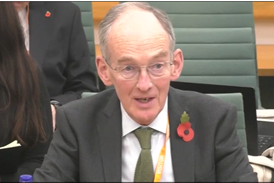
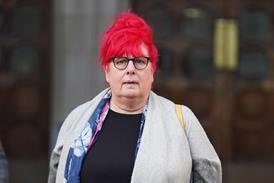



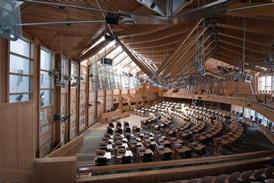
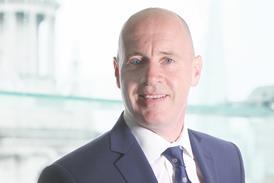






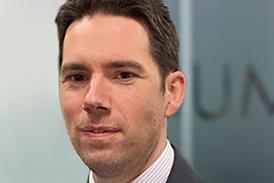

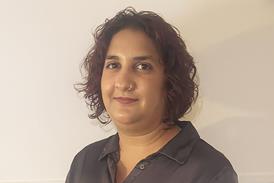

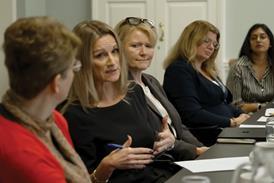







No comments yet